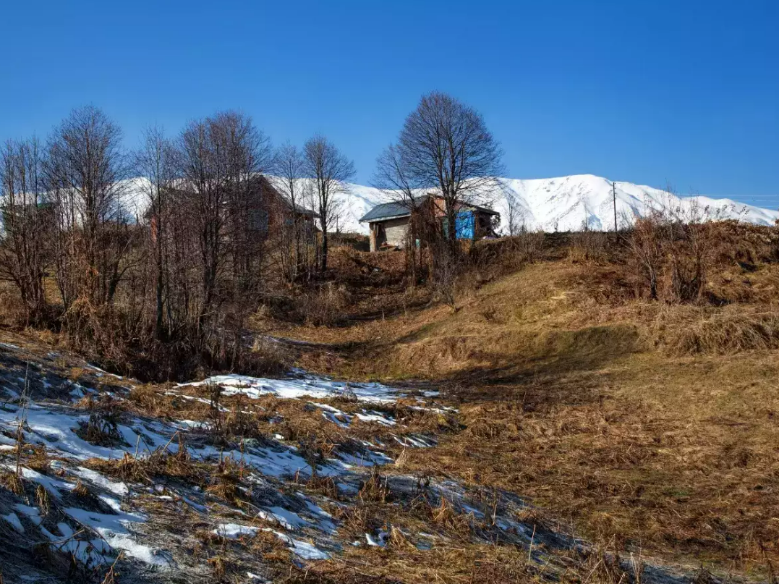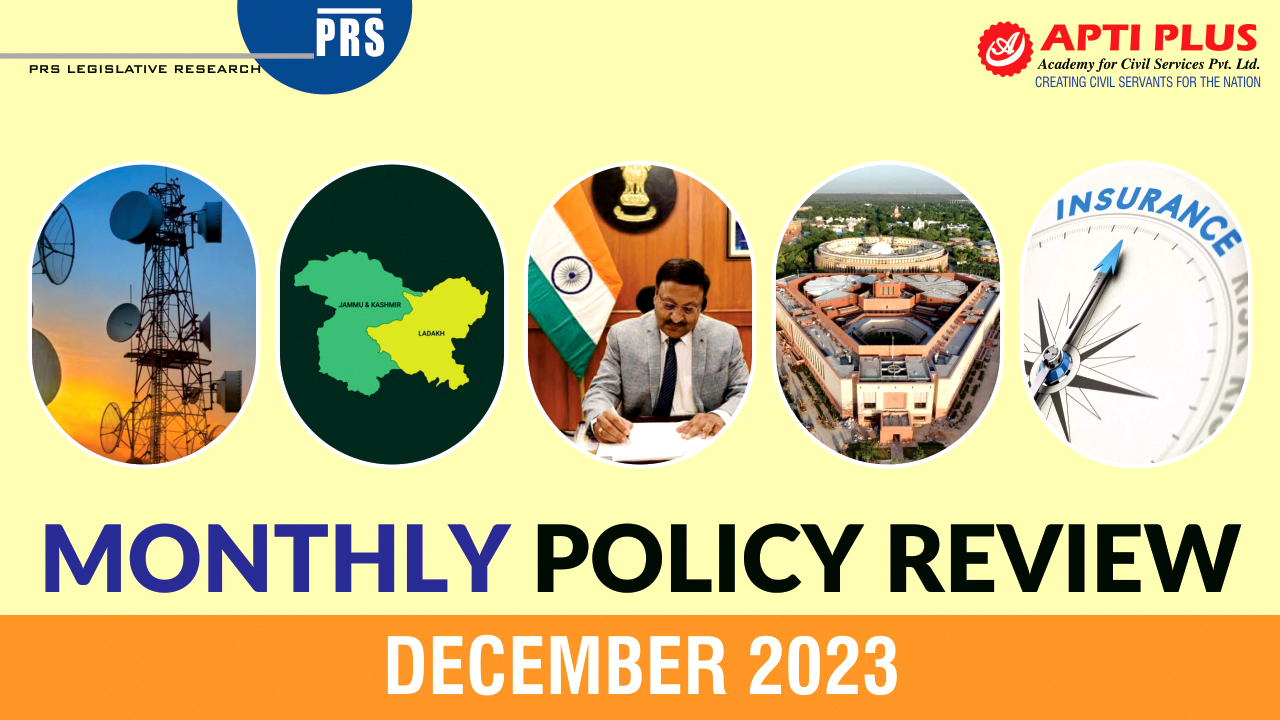
Disclaimer: Copyright infringement not intended.
Context
- One of Kashmir’s main winter tourism attractions, Gulmarg, has been bereft of snow this season.
Scenario
- Winter precipitation in Jammu and Kashmir, as well as Ladakh, is mainly in the form of snowfall.
- Normally, the region gets its first snowfall in the first half of December, and then through most of January.
- But it has been mostly dry this season.
- Though the lack of snow is the most visible in Gulmarg, a major tourist destination during this time of the year, the whole of Jammu and Kashmir, and Ladakh have remained largely without rains or snow this winter.
- Jammu and Kashmir saw an 80 percent rainfall deficit in December, and a 100 percent (absolutely no rain) deficit in January so far, India Meteorological Department (IMD) data show.
- Ladakh has had no precipitation at all in December or January.
- While snowfall in the region has been showing a declining trend in recent years, this season is remarkable.
Reasons behind
- The overall decreasing trend of snowfall has been attributed to a decline in western disturbance events and a gradual rise in temperatures, which involves the role of climate change.
- The prevailing El Nino event in the eastern Pacific Ocean might be the additional factor to account for this year, scientists say.
Western Disturbances
- Winter precipitation in the Himalayan region is caused mainly by Western Disturbances.
- These are large eastward-moving rain-bearing wind systems that originate beyond Afghanistan and Iran, picking up moisture from as far as the Mediterranean Sea and even the Atlantic Ocean.
- Western Disturbances are the primary source of rainfall over north and northwest India during the post-monsoon and winter months.
- Along with the southwest monsoon season that runs from June to September and the northeast monsoon that brings rains to Tamil Nadu and some other regions, Western Disturbances are the third major contributor to India’s annual rainfall.
- During winters, about four to six western disturbance events happen every month on average. This season there was one feeble western disturbance event in December that did not bring any rains, and another similar one in January.
- Western disturbances have been showing a declining trend in recent times.
- In some years we have seen just two or three events a month, when normally five or six are expected.
- Because of this, the overall precipitation during the winter months in the northern regions has also been declining.
- The mean frequency of extreme Western Disturbances, ones that result in rainfall or snowfall, had declined as much as 43 percent in recent years.
- The other, connected, thing is that temperatures in these regions are rising. The rate of increase of temperature is seen to be higher in the upper elevation areas than in the plains
- On many days, Srinagar temperatures are comparable to those of Delhi, sometimes they appear to be even higher. This is also contributing to the decline in snowfall.
El Nino impacts
- Indeed, there have been several years in the last one decade — 2022, 2018, 2015 — when winters have been relatively dry in Jammu and Kashmir, and snowfall has been very low. The situation this winter might be compounded by El Nino.
- For the past few months, El Niño has persisted and will continue to do so in the coming months. This has affected the global atmospheric circulation and might be contributing to the deficit precipitation in the region as well.
- Even in the absence of El Nino, some years had seen very little snowfall. In recent years, 2022 (December), 2018 (December-January), 2015 (January), 2014 (December), 1998 (December-January) and 1992 (December) were dry.
- The declining snowfall in Kashmir could be a direct fallout of climate change.
- Climate change has a role to play here.
Repercussions
- Less snowfall in the region is expected to have both short-term and long-term implications.
- Long-term implications include the generation of less hydroelectricity, an increase in the rate of glacier melting, and an adverse impact on the drinking water supply since scanty snowfall means very little recharge of groundwater.
- In the short term, a dry spell can increase forest fires, agricultural drought, and a drop in crop production.
- It can lead to an early spring, which means early flowering, which can cause a reduction in yield.
- The winter snow is a source of steady moisture to the soil that is vital for winter crops, particularly horticulture.
- Yields of apples or saffron, important ingredients of local economy, are badly affected in the absence of snowfall.
.jpg)
Broader Implications for Both the Environment and Socio-Economic Aspects of the Affected Areas:
Environmental Implications:
Hydroelectricity Generation:
- Short-Term Impact: Reduced snowfall contributes to lower water availability for hydroelectricity generation, leading to energy shortages and affecting power supply.
- Long-Term Impact: Diminishing snow cover may lead to prolonged water scarcity, impacting the sustainability of hydroelectric projects and the associated ecosystems.
Glacier Melting:
- Long-Term Impact: Less snowfall accelerates glacier melting, affecting the delicate balance of glacier-fed rivers, potentially causing irregular water flow patterns and impacting downstream ecosystems.
Groundwater Recharge:
- Long-Term Impact: Scanty snowfall reduces groundwater recharge, posing a threat to the availability of drinking water and agricultural irrigation in the region.
Ecosystem Disruption:
- Short-Term Impact: Dry spells can lead to increased forest fires, posing a threat to biodiversity and ecosystem stability.
- Long-Term Impact: Persistent decline in snowfall may disrupt the natural habitat, affecting flora and fauna adapted to winter conditions.
Socio-Economic Implications:
Tourism Industry:
- Short-Term Impact: Reduced snowfall adversely affects winter tourism, impacting the livelihoods of local communities dependent on tourism-related activities.
- Long-Term Impact: Decline in the attractiveness of tourist destinations like Gulmarg may lead to economic downturns for businesses and communities reliant on tourism.
Agriculture and Horticulture:
- Short-Term Impact: Dry spells can result in agricultural drought, leading to decreased crop yields and potential economic losses for farmers.
- Long-Term Impact: Changes in precipitation patterns may necessitate shifts in cropping patterns and the adoption of drought-resistant crops, affecting traditional agricultural practices.
Water Supply and Quality:
- Short-Term Impact: Decreased snowfall affects water supply for domestic and agricultural purposes, potentially leading to water scarcity.
- Long-Term Impact: Adverse impacts on drinking water supply quality due to insufficient recharge of groundwater.
Economic Diversification:
- Long-Term Impact: The declining snowfall emphasizes the need for economic diversification, encouraging the development of alternative industries less dependent on seasonal weather patterns.
Social Well-being:
- Short-Term Impact: The loss of snow-related activities and festivals may impact the cultural and social well-being of local communities.
- Long-Term Impact: Climate-induced changes may necessitate adaptation strategies, affecting the traditional way of life and community resilience.
Climate Change Adaptation:
Policy Interventions:
- Development and implementation of climate-resilient policies to address the impacts of changing precipitation patterns, incorporating scientific research and community input.
Technology Adoption:
- Investment in innovative technologies, such as snowmaking, to mitigate the impact on winter tourism and related sectors.
Community Awareness:
- Public awareness campaigns to educate communities about climate change and its implications, fostering adaptive practices at the grassroots level.
International Collaboration:
- Collaboration with international organizations to share knowledge, expertise, and resources in adapting to and mitigating the effects of climate change.
In conclusion, the diminishing snowfall in Jammu and Kashmir has far-reaching consequences, affecting the delicate balance of the environment and challenging the socio-economic fabric of the region. Comprehensive and adaptive measures are essential to mitigate these impacts and build resilience in the face of changing climate patterns.

Adaptive Measures and Policy Interventions for Diminishing Snowfall in Jammu and Kashmir:
Climate-Resilient Agriculture:
- Promotion of Drought-Resistant Crops: Encourage farmers to shift to crops that are more resilient to dry spells, ensuring a sustainable yield even with less snowfall.
Water Resource Management:
- Efficient Water Storage: Invest in water storage infrastructure such as reservoirs to capture and store water during periods of low precipitation for agricultural and domestic use.
Hydroelectricity Diversification:
- Explore Alternative Energy Sources: Diversify the energy mix by exploring alternative and renewable energy sources to compensate for the reduced hydroelectricity generation during dry periods.
Forest Fire Prevention and Management:
- Early Warning Systems: Implement early warning systems to detect and respond to potential forest fires, coupled with community involvement in fire prevention measures.
Community-Based Water Management:
- Community Reservoirs: Encourage the establishment of community-managed reservoirs to collect and store water, ensuring a more decentralized and resilient water supply system.
Snowmaking Technology:
- Artificial Snow Generation: Invest in snowmaking technology for key tourist destinations like Gulmarg, providing an artificial layer of snow for winter tourism and sustaining the local economy.
Diversification of Economies:
- Promote Alternative Industries: Encourage the development of alternative industries that are less dependent on snowfall, providing economic stability during variable weather conditions.
Climate-Resilient Infrastructure:
- Infrastructure Planning: Incorporate climate-resilient features into infrastructure projects to withstand the impacts of changing weather patterns, including increased temperatures.
Public Awareness and Education:
- Climate Change Education: Raise awareness about climate change and its local impacts, empowering communities to adopt adaptive measures and participate in sustainable practices.
Research and Monitoring:
- Climate Research Institutes: Establish or support climate research institutes to monitor regional climate patterns, enabling better prediction and adaptation strategies.
International Collaboration:
- Collaborative Research: Engage in collaborative research initiatives with international organizations to understand global climate patterns and leverage collective knowledge for adaptive strategies.
Policy Framework for Snow Conservation:
- Snow Conservation Policies: Develop policies focused on snow conservation, including measures to preserve existing snow cover and promote ecological balance in snow-dependent ecosystems.
Groundwater Recharge Initiatives:
- Artificial Recharge Programs: Implement artificial recharge programs to replenish groundwater during dry periods, ensuring a sustainable drinking water supply.
Horticulture Innovation:
- Innovative Horticulture Practices: Introduce innovative horticulture practices that reduce reliance on winter snow, ensuring the stability of key crops like apples and saffron.
Disaster Preparedness and Response:
- Emergency Response Plans: Develop and regularly update disaster response plans to address the immediate impacts of climate-related events, such as agricultural droughts and forest fires.
The combination of these adaptive measures and policy interventions aims to address the diverse challenges posed by diminishing snowfall in Jammu and Kashmir, ensuring sustainable development and resilience in the face of changing climatic conditions.
|
PRACTICE QUESTION
Q. Examine the multi-faceted impacts of the declining snowfall in Jammu and Kashmir, with a focus on the 2022 winter season. Discuss the interconnected factors contributing to this phenomenon. Assess the short-term and long-term repercussions on various sectors and the local economy. Suggest adaptive measures and policy interventions to mitigate the adverse effects of diminishing snowfall in the region. Illustrate your answer with examples from recent years, emphasizing the broader implications for both the environment and socio-economic aspects of the affected areas.
|












